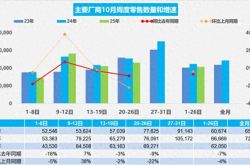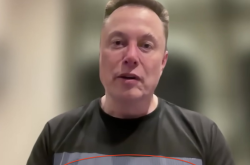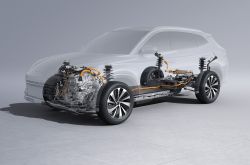Under the Surge of AI, the Industrial Internet Comes to Life
![]() 04/25 2025
04/25 2025
![]() 583
583
AI is ushering in a profound transformation across all industries.
Behind this sweeping change, one unmistakable development indicator is the imminent arrival of the Industrial Internet era.
A significant reason for this assessment is that AI is not about building platforms or acquiring traffic; it's about applications and their implementation within industries.
As this trend becomes apparent, a new epoch of the Industrial Internet looms on the horizon.
The concept of the Industrial Internet is not a recent innovation.
As the mobile internet wave wanes, internet giants, among the first to feel the chill, have started exploring the Industrial Internet's development trajectory.
This is particularly true for Alibaba and even more so for Tencent.
While these leading internet companies have recognized the general trend of the Industrial Internet, they haven't yet found effective ways to implement it.
The reason lies in the inherent limitations of internet technology, which hinder its ability to realize the Industrial Internet. While internet technology is effective in certain areas of disintermediation, it falls short in transforming and empowering industries.
As the internet evolves, particularly with the maturation and improvement of AI, the once elusive Industrial Internet is becoming increasingly attainable.
Whether players utilize AI to transform their internal elements, processes, and business logic or to deeply empower various industrial scenarios, it's evident that the Industrial Internet is transitioning from a dream to reality.
With the rise of AI, de-platforming emerges as a trend.
When discussing the difference between the Industrial Internet and the Consumer Internet, de-platforming and decentralization are pivotal aspects.
Before AI's maturity, many players pursued de-platforming and decentralization merely for the sake of it, failing to achieve them in a genuine sense.
It's almost certain that de-platforming for de-platforming's sake cannot truly lead to the Industrial Internet; only genuine de-platforming can realize it.
As AI gains popularity, we see more players actively embracing industries and diving into various scenarios. A crucial reason is that AI can only complete industry transformations and maximize its potential in this manner.
Against this backdrop, the barriers between online platform players and offline entity players formed during the Consumer Internet era are breaking down. Instead, a deep integration of online and offline players is becoming a reality.
As deep integration becomes the norm, de-platforming is no longer a distant concept but an inevitable outcome that must be achieved.
In the AI era, when de-platforming becomes a standard configuration, it aligns with the general trend of the Industrial Internet's development.
When online and offline players achieve deep and comprehensive integration through AI, de-platforming in the Industrial Internet era is no longer a distant, elusive goal but something that can be realized, spawning new business paradigms.
As AI matures, traffic undergoes a complete transformation.
The key factor that truly created the Consumer Internet model lies in the proliferation of the traffic model and the emergence of various "Internet+" models.
It can be said that the division of traffic types ultimately led to the Consumer Internet era.
Therefore, without escaping or altering the traffic model, the Industrial Internet cannot be realized.
This explains why many past attempts at the Industrial Internet have never truly succeeded.
As AI matures, especially when it starts to dismantle the traffic division model established during the Consumer Internet era, the distinctions between B-end and C-end traffic begin to blur, replaced by a unified transformation target within the AI context.
From AI's perspective, both B-end and C-end traffic need to be transformed and reshaped.
When players no longer rely on traffic for commercial success but genuinely take the industry as the main driver to find new development opportunities by achieving a new supply-demand balance, the so-called Industrial Internet becomes not a distant dream but a natural reality.
Ultimately, when AI matures, particularly when it starts to break the traditional traffic division and ultimately the boundaries between traditional B-end and C-end traffic, the true era of the Industrial Internet can be said to have truly arrived.
The reason is that the genuine Industrial Internet is not supported by the Consumer Internet era's traffic model but by new industries and supplies.
As AI implementation begins, digital-physical integration is being realized.
Reflecting on the Consumer Internet, it's clear that it achieved its development by establishing a dual economic structure of the virtual and real economies.
Both internet players and real economy players found new development opportunities through this dual structure.
From this perspective, the Consumer Internet era was an era of separation between the virtual and real economies.
When information asymmetry existed, especially under the backdrop of poor supply-demand alignment, this dualistic Consumer Internet model could achieve a certain level of development.
However, as information asymmetry decreases, and contradictions between the virtual and real economies emerge, development solely through this model encounters increasing challenges.
It's under these circumstances that the concept of the Industrial Internet emerged.
However, supported by internet technology, the virtual economy-represented digital economy and the physical industry-represented real economy remain separated, failing to achieve true integration.
With this separation, the Industrial Internet cannot be achieved.
As AI implementation begins, especially when it starts a deep and comprehensive transformation of the digital and real economies, the dual structure of the virtual and real economies formed during the Consumer Internet era starts to break down.
A new development model of digital-physical integration, represented by the deep integration of the virtual and real economies, emerges.
In other words, under AI's mechanism, digital-physical integration is no longer a distant concept but something that can be implemented and realized.
When digital-physical integration begins to be achieved, the core and essential characteristics of the Industrial Internet start to emerge.
At this point, the Industrial Internet is no longer a distant goal but something that can naturally come to life against the backdrop of digital-physical integration.
Conclusion
With AI's popularity, we witness the beginning of a new revolution sweeping through industries and scenarios.
If we were to summarize and define this revolution, the Industrial Internet is undoubtedly the most fitting term.
Just as the popularity of internet technology marked the advent of the Consumer Internet era, the popularity of AI technology signals the arrival of the Industrial Internet era.
With AI's rise, traditional platforms and centers, B-end and C-end distinctions, and virtual and real economies will cease to exist. Instead, new industries, businesses, and an era will emerge.








